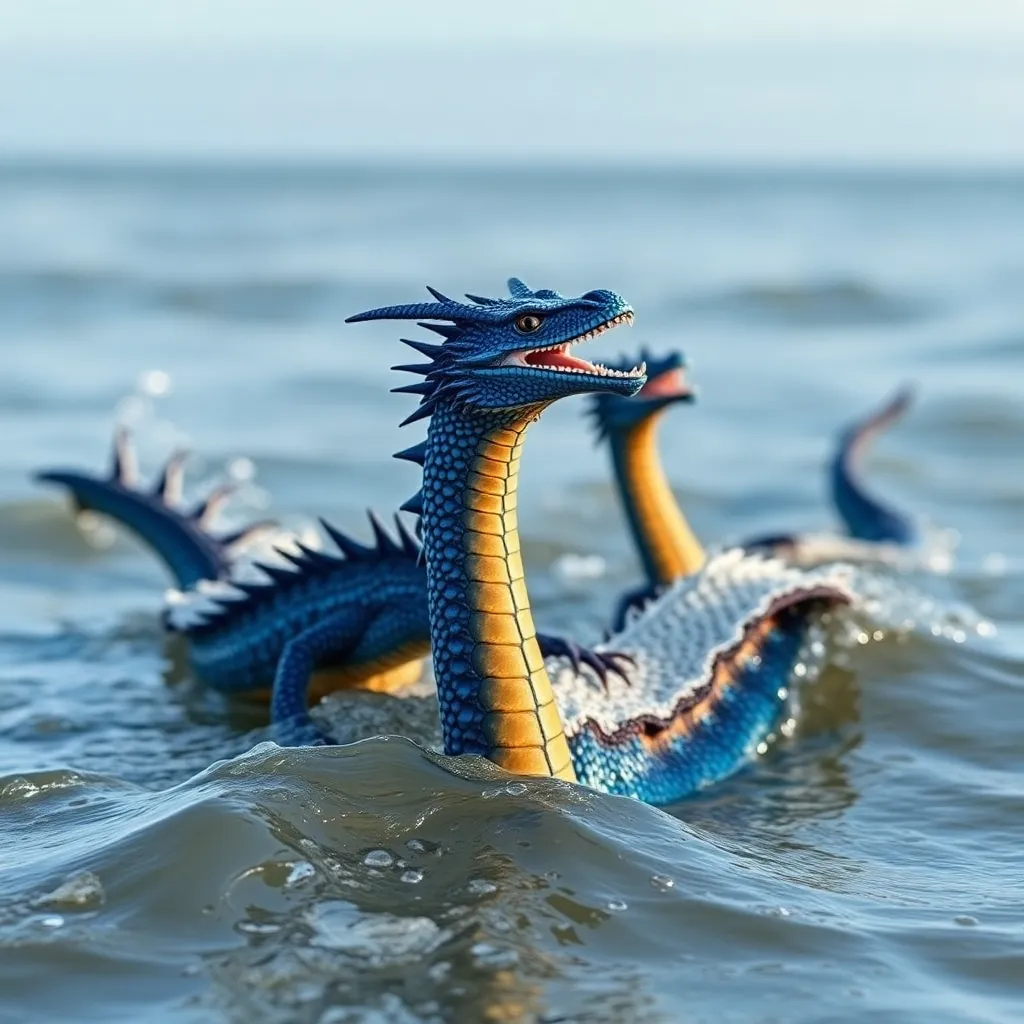

Blue Sea Dragons Make Waves on North Carolina’s Outer Banks!
Buxton, N.C. – It’s not every day you come across something as fascinating as a venomous sea slug right here on the sunny shores of North Carolina! Folks in Buxton were in for a surprise when these beautiful blue sea dragons started making an appearance along the Outer Banks. So, let’s talk about these little critters and what you need to know if you happen to spot one!
Blue sea dragons, scientifically known as Glaucus atlanticus, are tiny little guys measuring just about one inch long. They might be small, but don’t let their size fool you. These slugs are quite extraordinary and are well-known for their bright blue coloration. Their beauty, however, comes with a sting – these slugs are venomous!
So, why are these slugs popping up along our coast? Blue sea dragons are primarily found in the warm waters of the Pacific, Indian, and Atlantic oceans. While they usually prefer temperate or tropical waters, the warming oceans have been providing them with new habitats. Recently, they’ve even been spotted all the way down on the Texas Gulf Coast!
Blue sea dragons tend to appear along the shoreline after strong winds or storms. They’re mostly carried ashore by the currents, and you might see them “hitching a ride” on the waves. Keep your eyes peeled, as they can travel in groups, which means you might find more than just one!
The Cape Hatteras National Seashore is advising everyone to admire these slugs from a safe distance. Remember, while they might seem like cute little ocean dwellers, their venom is something you want to avoid getting too close to. Interestingly, even after they die, blue sea dragons can still be venomous. Yikes!
What do these slugs eat, you ask? They primarily feast on the notorious Portuguese man o’ war jellyfish. The blue sea dragons are remarkable in that they can consume the jellyfish’s venom and store it for their own defense, making them a double threat if you happen to cross paths with them.
If you’re lucky enough to spot a blue sea dragon while visiting the Outer Banks or any coastal area, be sure to take a moment to appreciate their uniqueness. Just snap a picture from a distance and refrain from touching them. Let’s respect these incredible creatures and give them the space they need to thrive.
There you have it! The outer banks have welcomed some of the ocean’s most intriguing and stunning creatures right to our sandy shores. As these blue sea dragons grace us with their presence, let’s enjoy their beauty while keeping ourselves safe. 🌊 Stay curious and keep exploring the wonders of nature!
News Summary The Bodie Island Lighthouse in Nags Head, NC, reopened for self-guided climbing on…
News Summary New York State has officially announced a ban on smartphones in schools beginning…
News Summary On April 29, 1975, Capt. Larry Chambers made a life-altering decision during the…
News Summary The international student community at Arizona State University has mobilized in protest following…
News Summary On April 30, 2025, Vietnam commemorated the 50th anniversary of the fall of…
News Summary In a groundbreaking move, nearly 55,000 L.A. County workers initiated a two-day strike,…